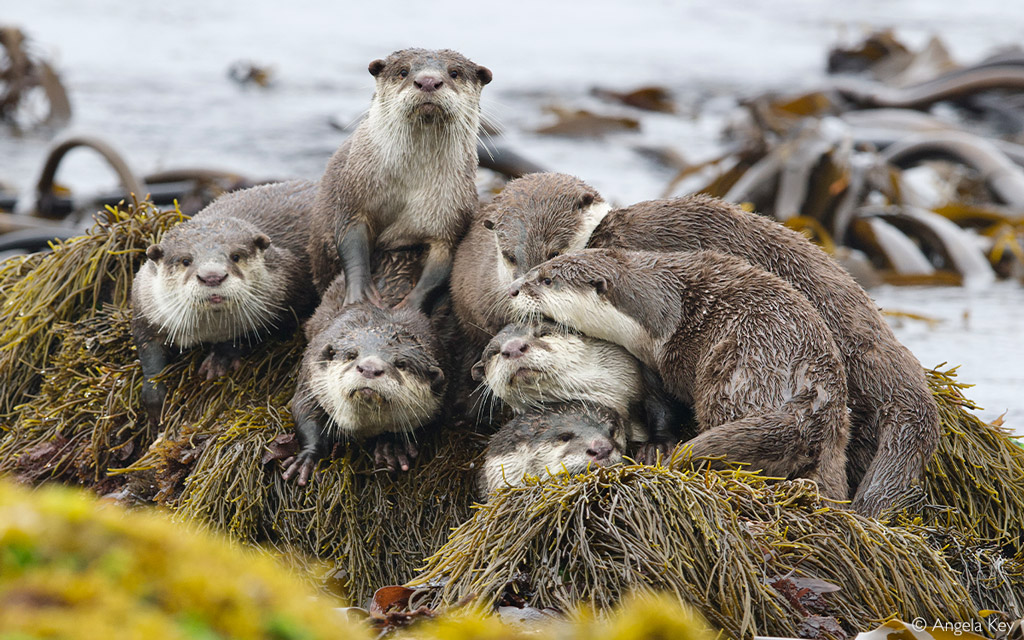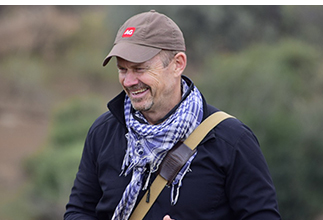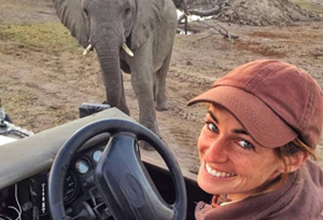
This is a copy of our weekly email newsletter. Subscribe here to receive the newsletter.
Epic pics + Central Kalahari magic + entertaining otters

Such Disneyfied drama!
Fig, a confiding and beloved leopardess from a conservancy bordering the Maasai Mara, is no more – killed by a male lion. I can imagine how traumatic this must have been for the guests and guides that bore witness. And yet this PRIMAL process plays itself out all over wild Africa, in so many ways.
One gent, a respected photographer and local lodge owner, was so upset about the manner of Fig’s demise that he threw himself into a rather dramatic Facebook post. He described the lion as “a brutal alpha male” that “invaded a small unthreatening enclave“. On the lion’s behaviour, he commented that the “leonine tyrant savaged its innocent prey in an unprovoked, unnecessary and seemingly unwarranted attack“. Fig was described thus: “She was our bank, inspiration, figurehead, and confidant. She was our Zelensky.”
Stepping aside from the peculiar reference to the Ukraine situation, reactions like this from a person of influence in response to nature behaving normally emphasize the ongoing Disneyfication of real life in Africa. CELEBRATE Fig and mourn her, but never ever condemn nature for doing her thing. Drops the mic
Keep the passion

Simon Espley – CEO, Africa Geographic
From our Editor – Taryn van Jaarsveld

Is there a right way to photograph people?
A few of this week’s Photographer of the Year entries capture intimate human moments around the continent – allowing visceral views into diverse cultures and sparking introspection in the AG office. When is photographing people intrusive? Where is the line drawn between respectfully representing a complex situation, or reducing it to a one-sided, simplistic narrative? Is it invasive to position one’s lens amidst a Maasai circumcision ceremony or a Boloye dance – or does this depend on the circumstances in which a subject agrees to be photographed?
Our consensus in the office is reflected in our guidelines for submissions. Authenticity is key. Permission: essential. And the subject’s understanding of the potential exposure a photograph’s journey can bring: vital. The results can be wonderful – images that enlighten through education, stirring the viewer’s understanding of the world and expanding horizons. A single image can ignite action and change history. And it can bring inspirational Africa straight to you, our AG family. We’d love to hear your thoughts on this – comment on our Photographer of the Year entries via our first story below (join the club to comment).
For a bit of escapism this week, our second story below takes you to the wildlife-dotted plains of Kalahari Central Game Reserve. Read about this remote part of Botswana, which calls to the most rough and ready of adventurers. Happy indulging in Africa to you all!

From our Scientific Editor – Jamie Paterson

Every story has its villain, and nature is no different when trying to force it into a neat narrative. Vilification is inevitable when animals don’t conform to our moral expectations. It’s peculiar, the disparate values people assign different species – a lion killing a buffalo is exciting, a lion killing a leopard is a tragedy, a lion killing lion cubs is an abomination. (All often discussed in horror over a steak or pork chop dinner.)
But did you know that scientists have traced the neural pathways of infanticide? Their results are not all that straightforward, but, in essence, aggressive acts towards young of the same species (like infanticide) are mediated by regions of the brain entirely separate from those associated with other types of aggression. This behaviour is pure instinct and is therefore simply part of the natural way of things. And we cannot cherry-pick the aspects of nature we choose to appreciate…

Story 1
https://africageographic.com/stories/photographer-of-the-year-2022-weekly-selection-week-5/
EPIC PICS
Celebrate Africa’s people and wildlife in our Week 5 selection of Photographer of the Year shots. Submit your entries now.
Story 2
https://africageographic.com/stories/central-kalahari-game-reserve/
CENTRAL KALAHARI
Botswana’s Central Kalahari Game Reserve is a true wilderness that casts a spell on her visitors
 TRAVEL DESK UPDATES:
TRAVEL DESK UPDATES:
MOUNTAIN GORILLA TREKKING is always a favourite bucket-list choice amongst our safari clients. We have our popular 3-day gorilla trekking safari in Rwanda for the time-pressured traveller. Prices are excellent, even more so for SADC tourists. It’s time to tick this one off your list …
TIPPING – when to tip and how much? Now that the go-on-safari surge is gaining momentum, we address this perennial source of angst amongst travellers. Here then, are a few tips about tipping.
 WATCH: The illegal trade in African grey parrots is facilitated by traders using social media – as presented by BBC Click. This documentary features club member World Parrot Trust – Africa. Watch this portion 02:01 – 11:15
WATCH: The illegal trade in African grey parrots is facilitated by traders using social media – as presented by BBC Click. This documentary features club member World Parrot Trust – Africa. Watch this portion 02:01 – 11:15
To comment on this story: Login (or sign up) to our app here - it's a troll-free safe place 🙂.![]()






